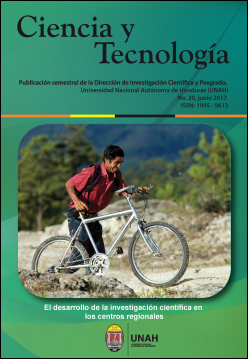Clinical and epidemiological characterization in patients with infection by Enterobacteriaceae producing B-lactamases extended spectrum (ESBL), University School Hospital, Tegucigalpa, Honduras, Year 2013
DOI:
https://doi.org/10.5377/rct.v0i20.5495Keywords:
epidemiological factors, betalactamasas, infection. E. coli, K. pneumoniaeAbstract
Previous studies demonstrate that the prevalence of Enterobacteriaceae producing B spread spectrum lactamases (ESBL) has increased worldwide increasing the risk of mortality in patients infected with this type of bacteria. Objective: To determine the clinical and epidemiological characteristics in patients with Enterobacteriaceae infection producing B spread-spectrum lactamases (ESBL) at the University´s School Hospital in Tegucigalpa, Honduras in the year 2013. Methodology: Descriptive cross-sectional study in patients with ESBL-producing Escherichia coli and Klebsiella pneumoniae positive cultures. Positive cultures were identified through hospital bacteriology laboratory records from June to August 2013. Positive samples were analyzed using the Kirby-Bauer method and the commercial E-test for Minimum Inhibitory Concentration (MIC). Clinical records were reviewed to obtain clinical and epidemiological information. Data analysis was performed in Epi info 7. Results: 50 samples of E. coli positive cultures and 49 samples of K pneumoniae were collected during the period. The mean age of patients with E. coli was 33.6 years ± 26.5 1DE and 26.5 years ± 26.4 DE with K. pneumoniae. Samples were collected at 10.0 days in average hospitalization for patients with E. coli and 21.8 days for K. pneumoniae patients and differences were significant (p = 0.02). E. coli was resistant to 9 of the 11 antibiotics, K. pneumoniae to 10 of the 11 antibiotics studied and the differences were significant (p = 0.00002), the most frequent type of sample where E. coli was isolated was urine (62.0 %) And K. pneumoniae only 34.7% of urine followed by hemoculture (16.3%) and ICU was where the highest percentage of K. pneumoniae was isolated whereas E. coli was in outpatient clinic. Conclusions / Recommendations: The results of this study show the existence of BLEE Enterobacteriaceae, highly resistant, essentially to the third generation cephalosporins and should be redefined the antibiotic therapy schemes for the improvement of the quality of hospital medical care.
Revista Ciencia y Tecnología No.20, junio 2017; 50-66
Downloads
1915
Downloads
Published
How to Cite
Issue
Section
License
© Revista Ciencia y Tecnología
Authors who publish in this journal accept the following conditions: In accordance with the legislation of copyright, Revista Ciencia y Tecnología, recognizes and respects the moral right of authors, as well as the ownership of the patrimonial right, which will be ceded to the magazine for its diffusion in open access in printed version and in digital format. By being part of multiple indexers, databases and reference systems, the articles published by Revista Ciencia y Tecnología will be visible and will be downloaded from these websites, indicating, in all cases, the authorship of the articles, the date of publication and the number of the journal to which they correspond.




